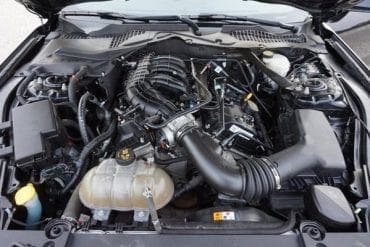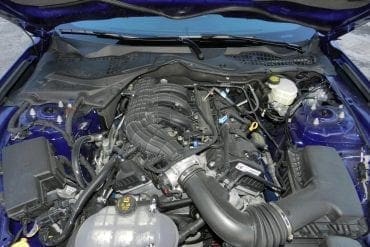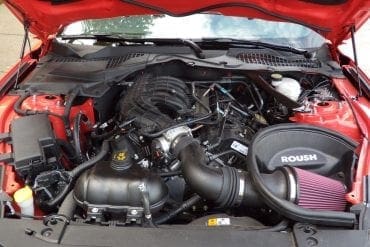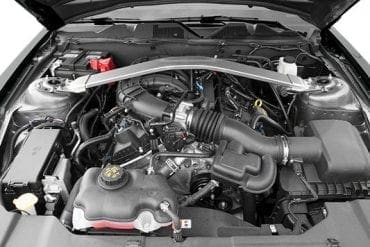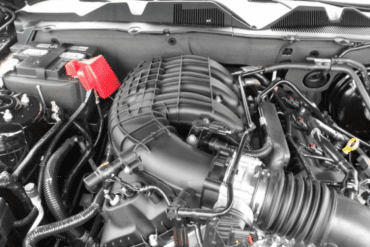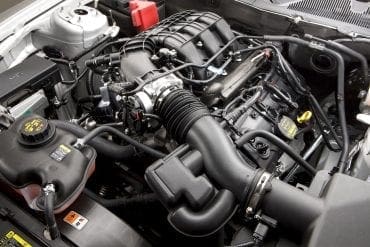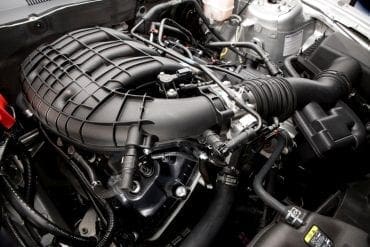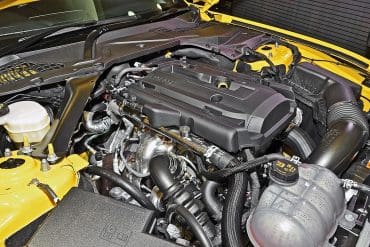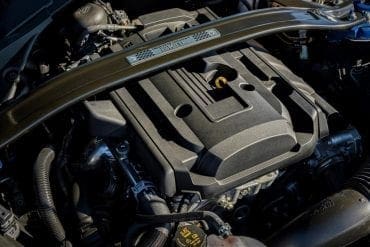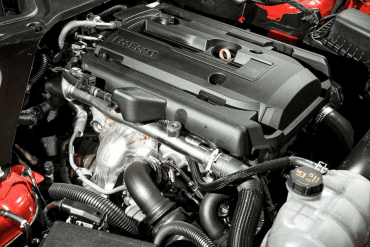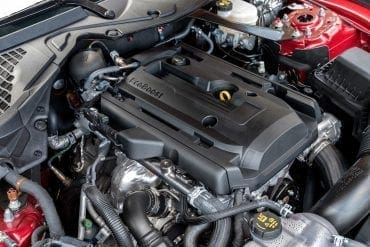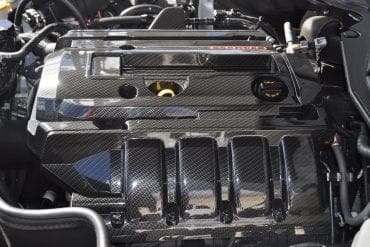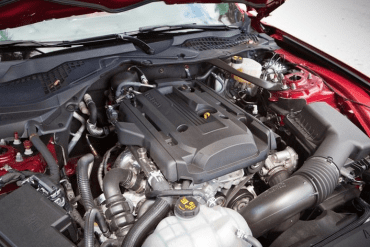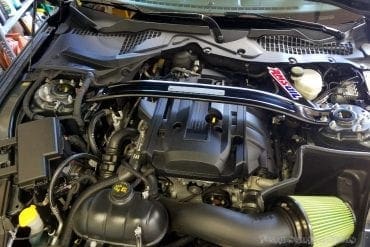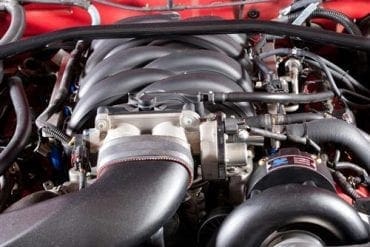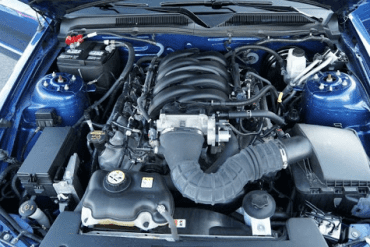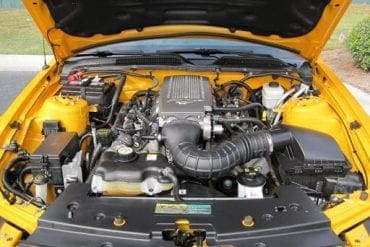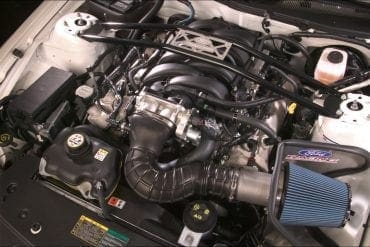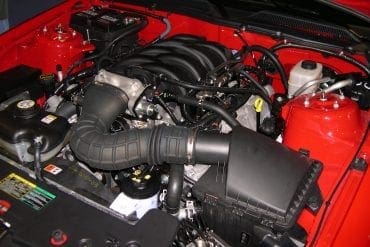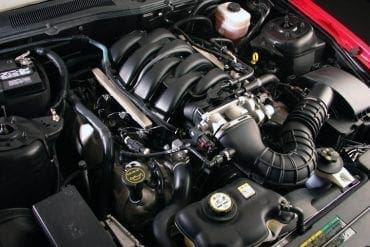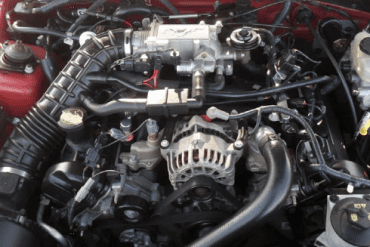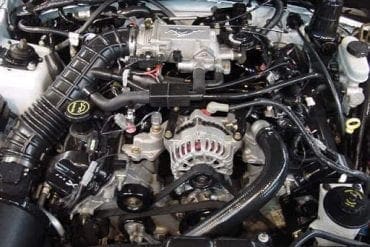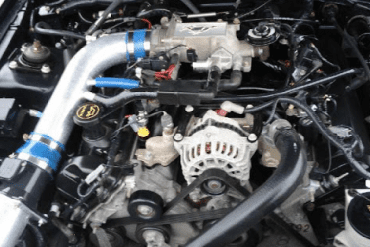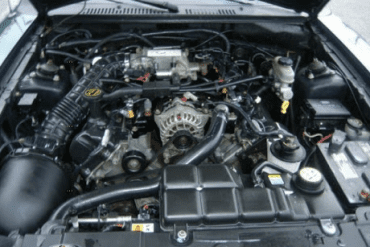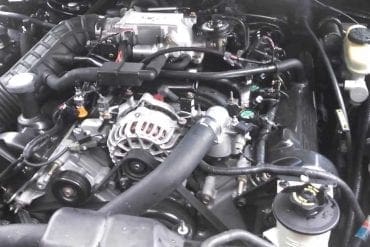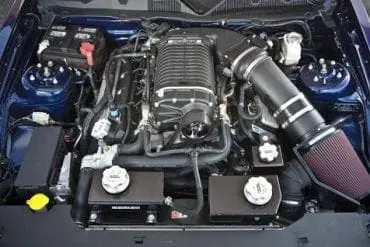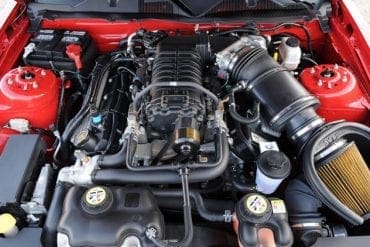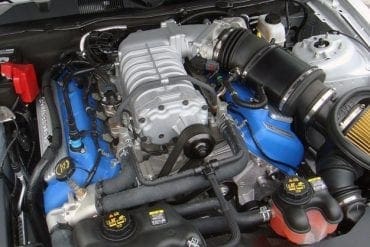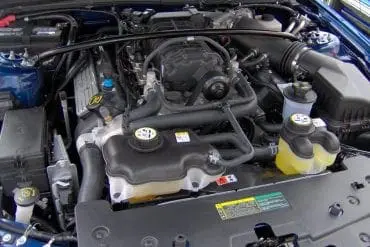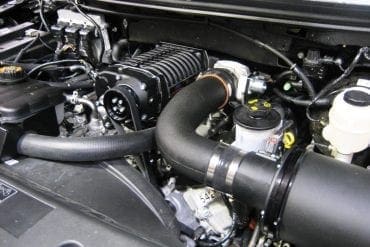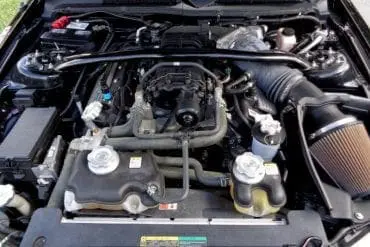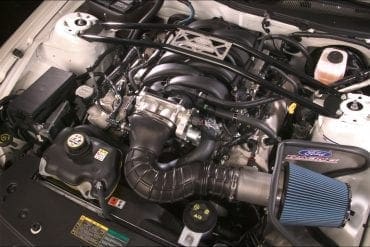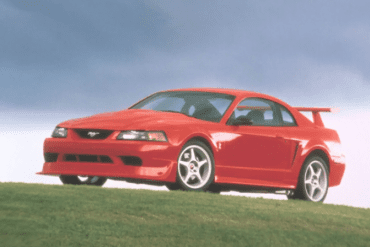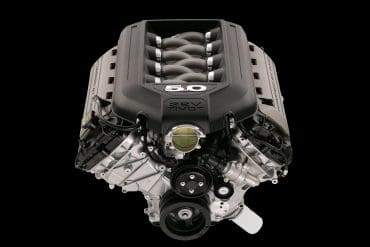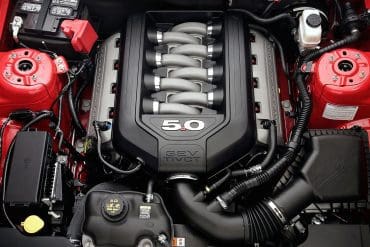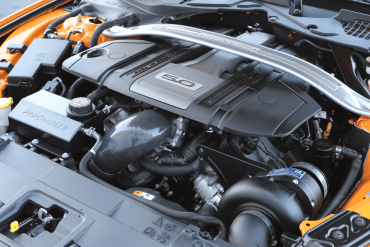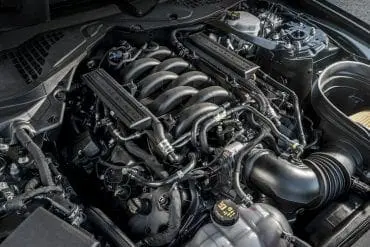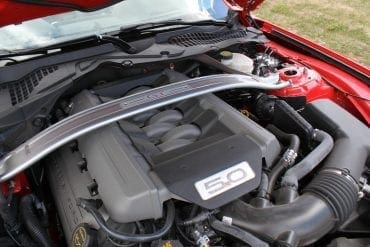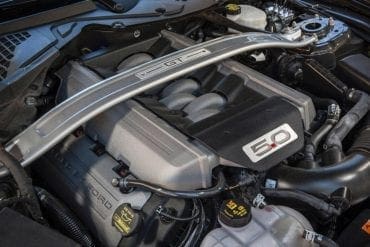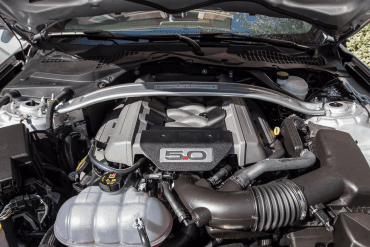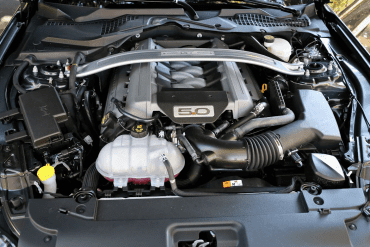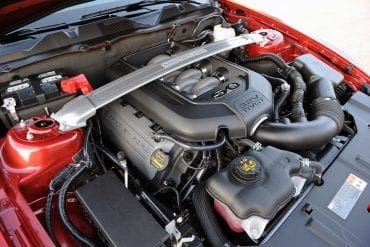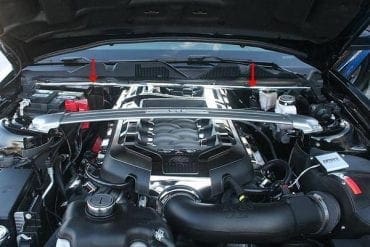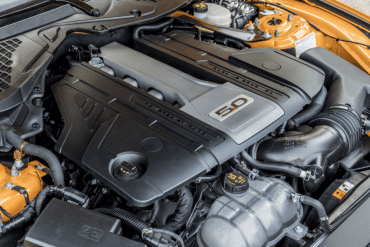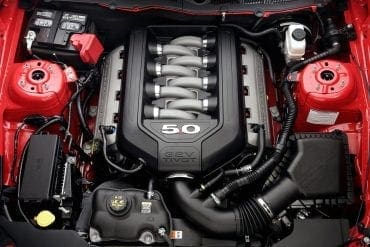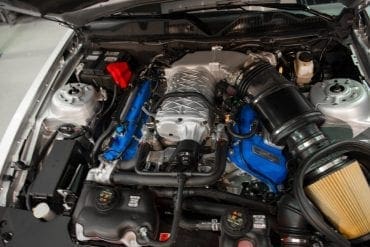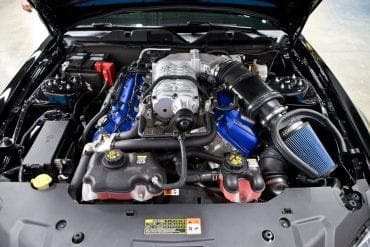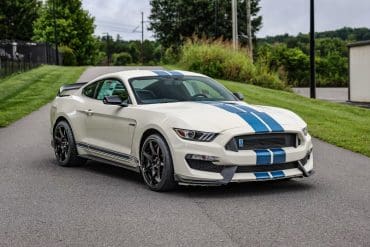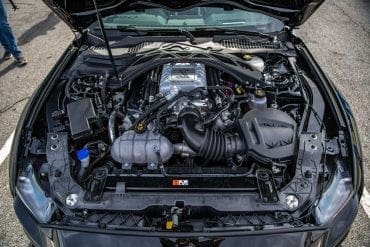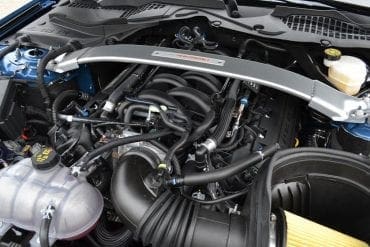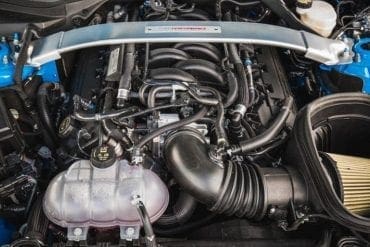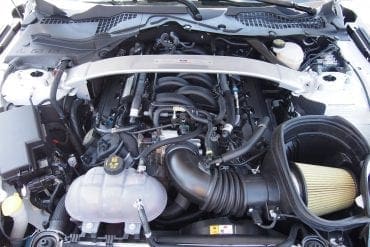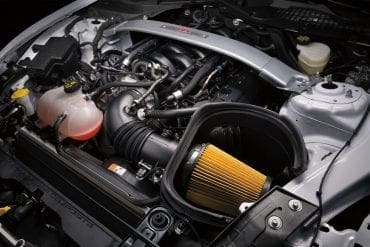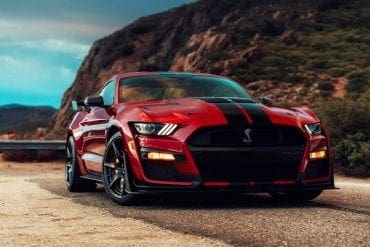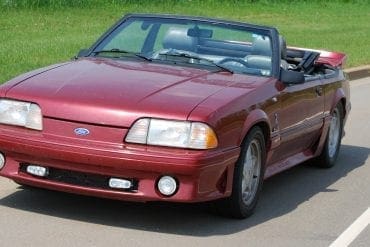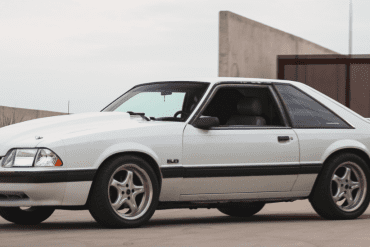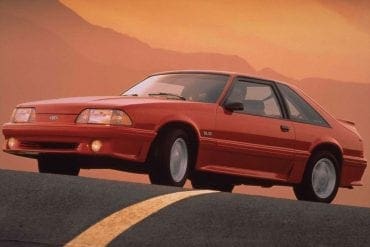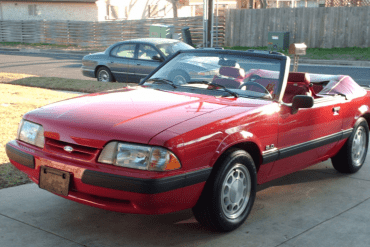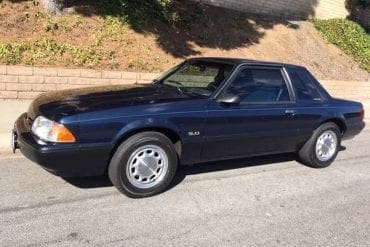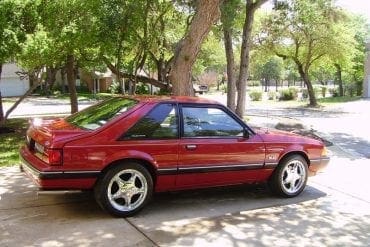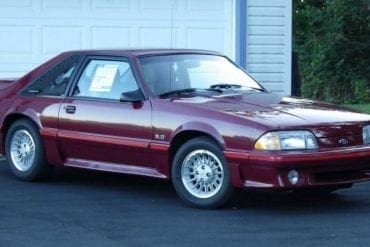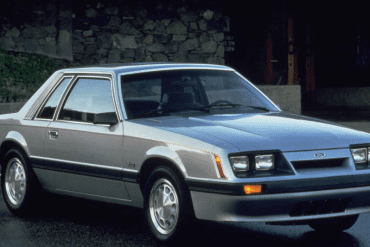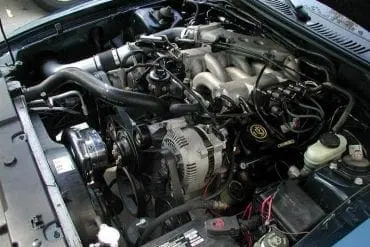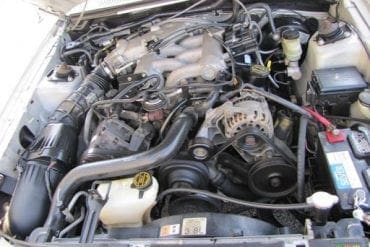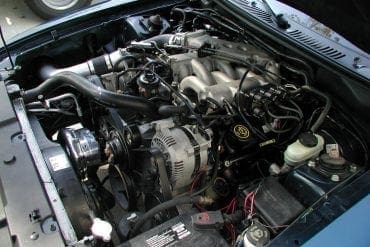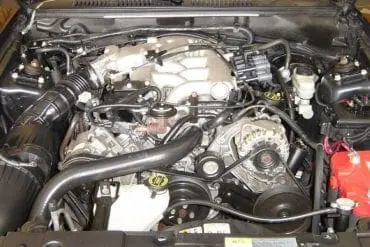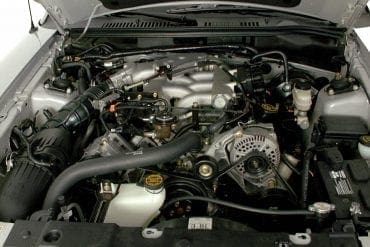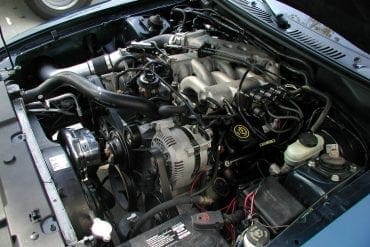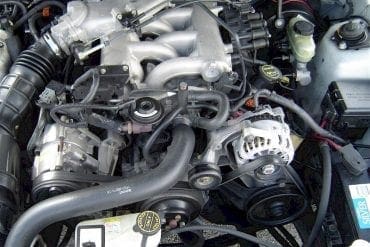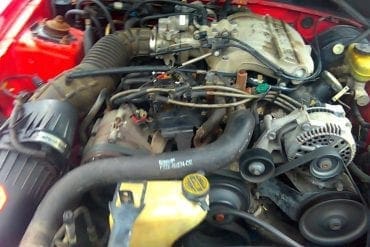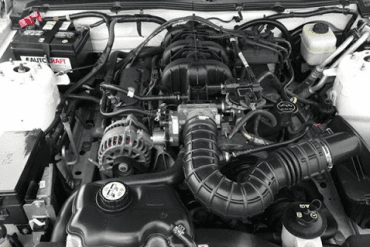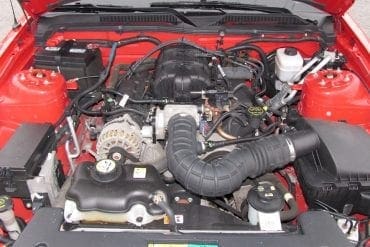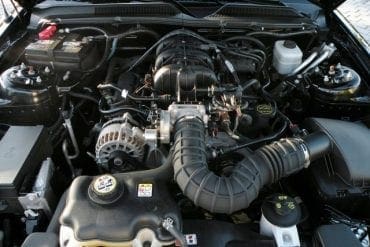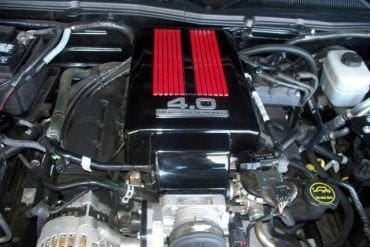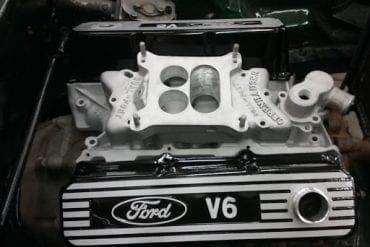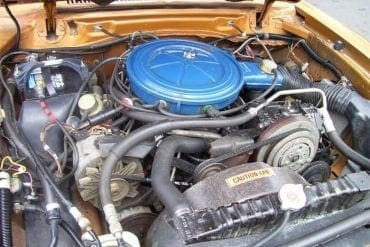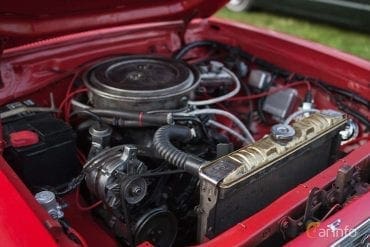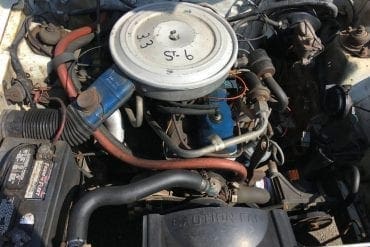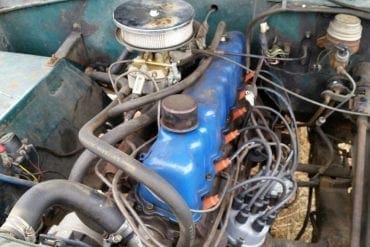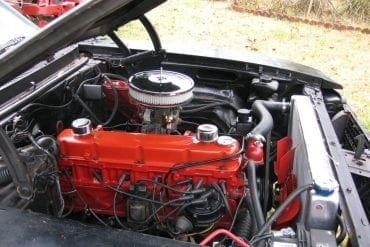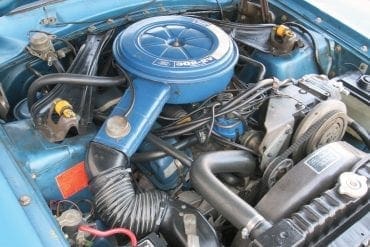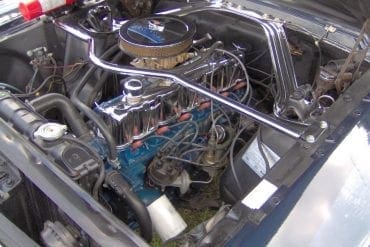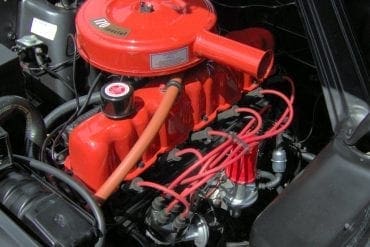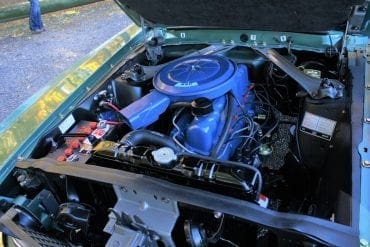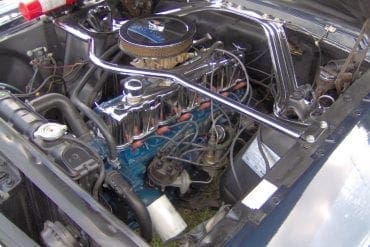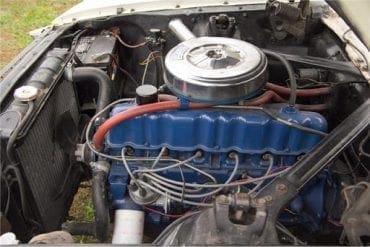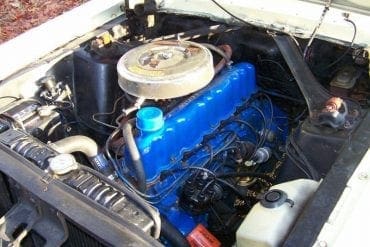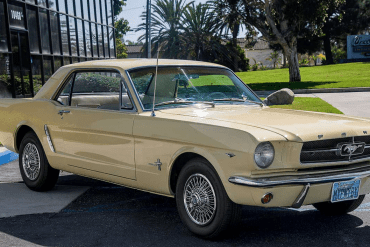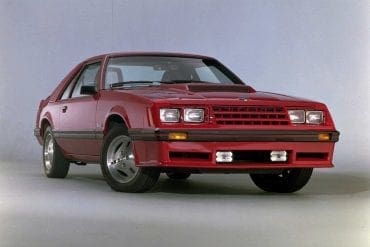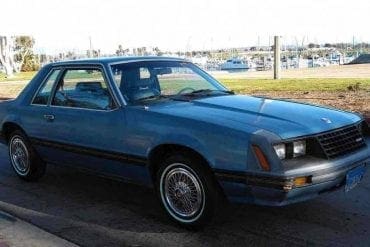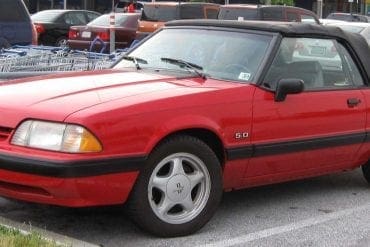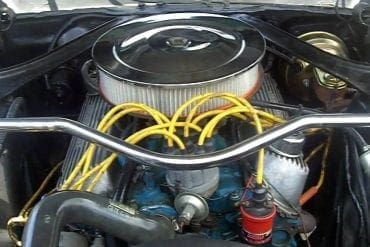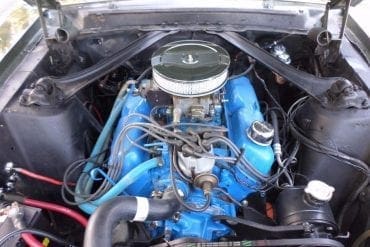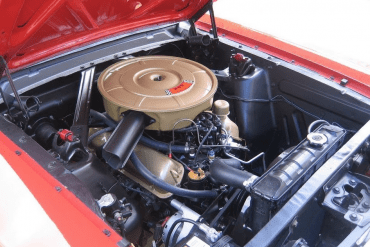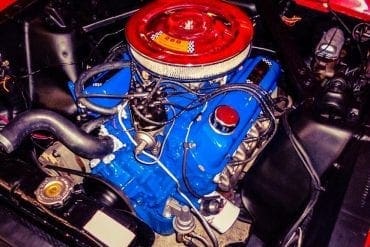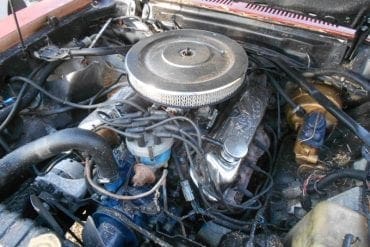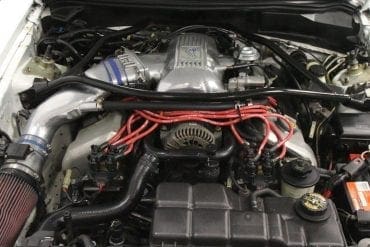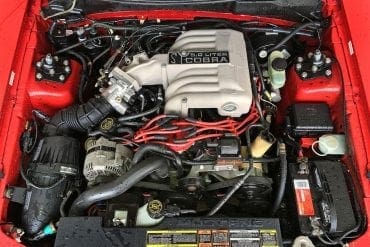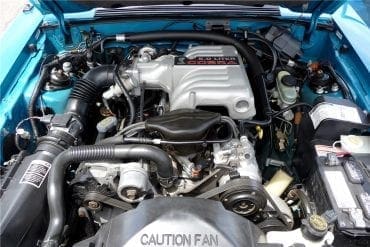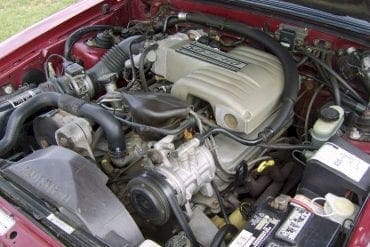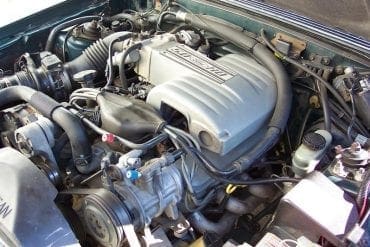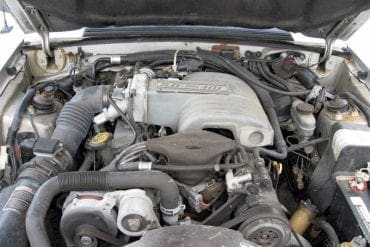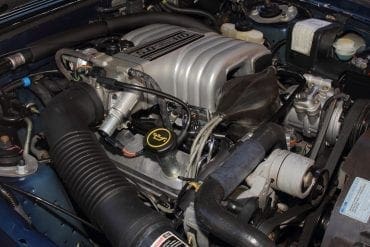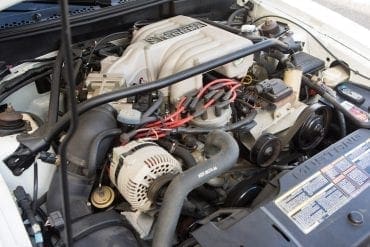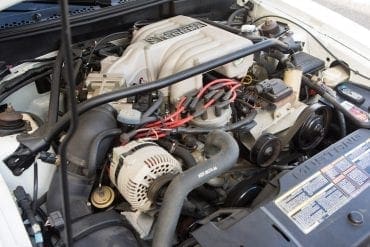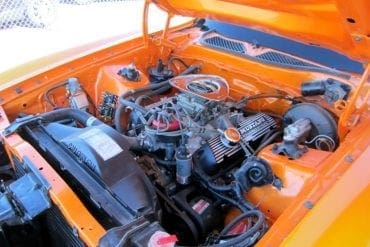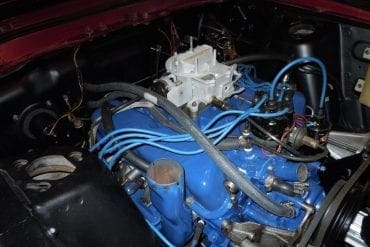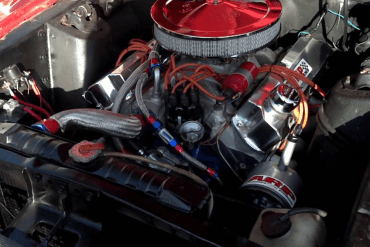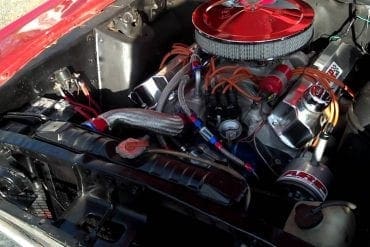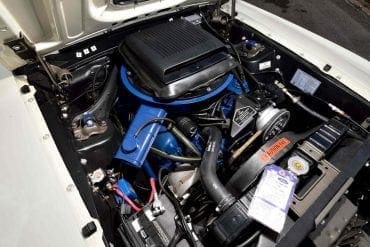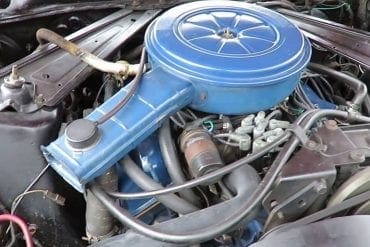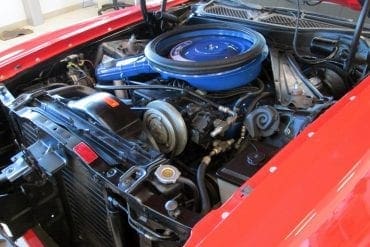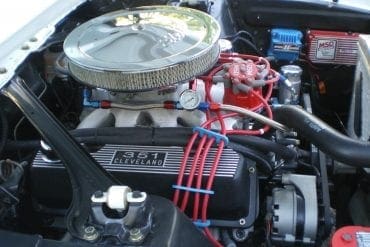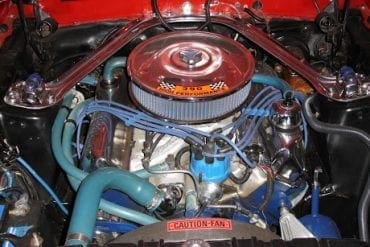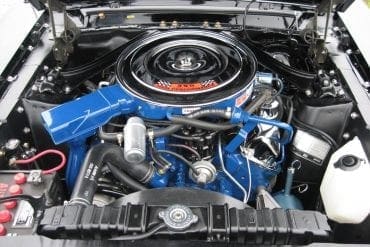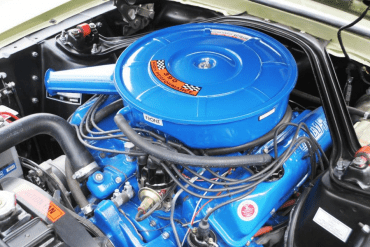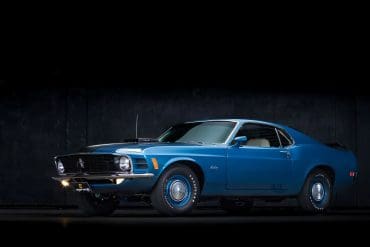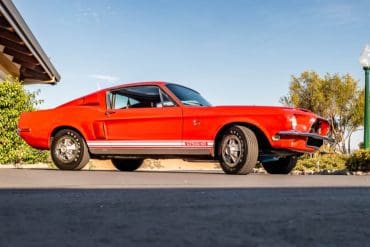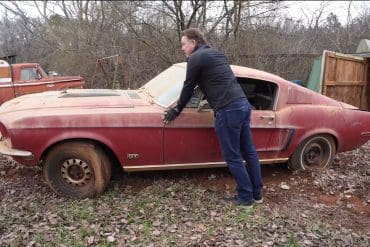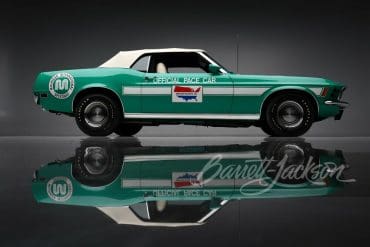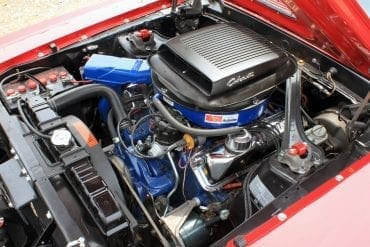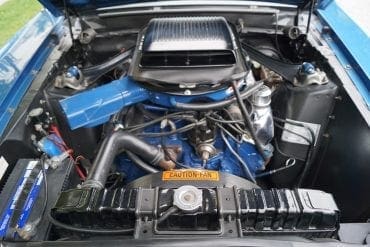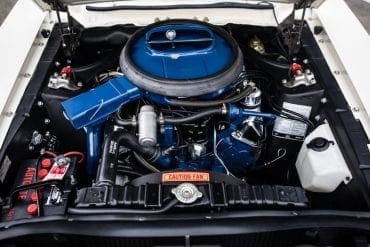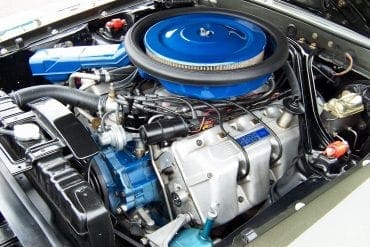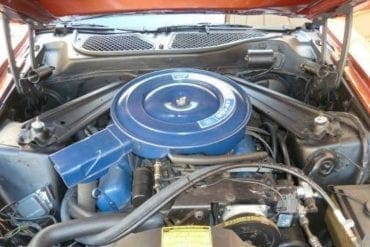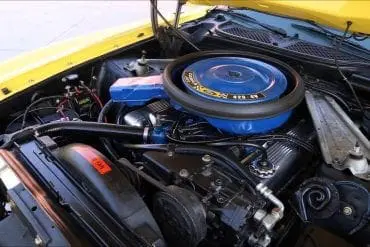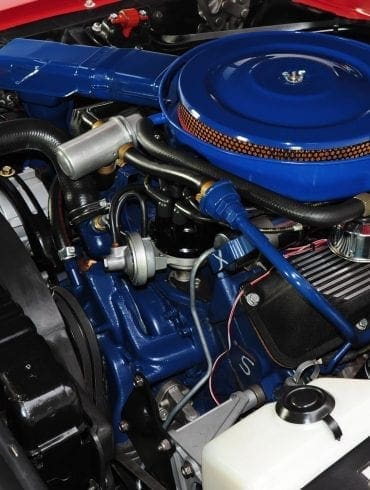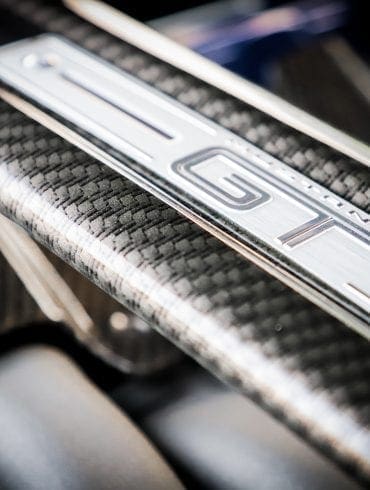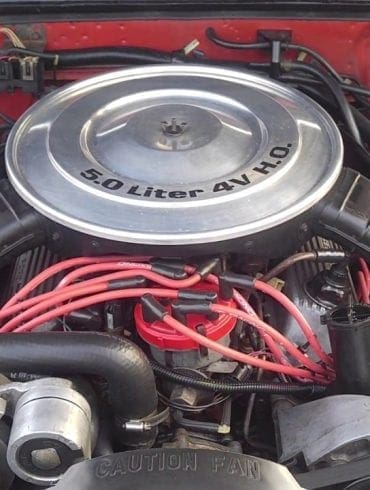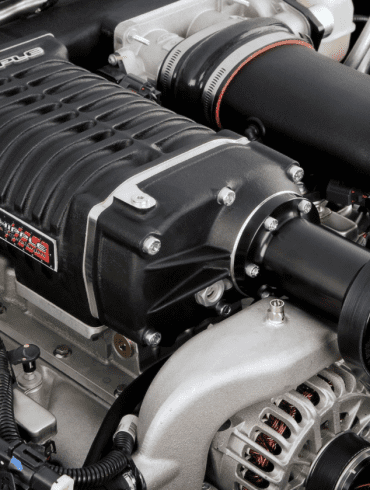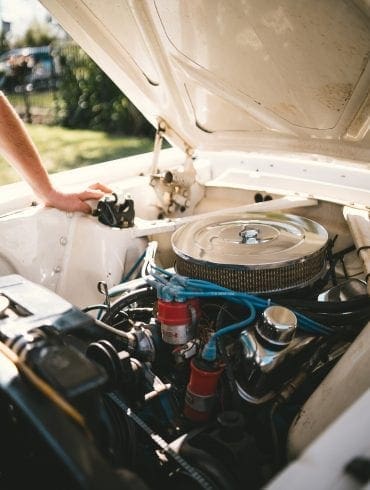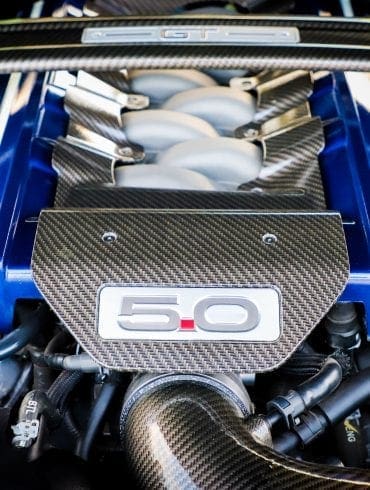Ford Engines Used in Mustangs
Quick Links:
- 137 EcoBoost (2.3L) Inline 4 Engine
- 140 Lima Inline 4 (2.3 L) Engine
- 170 Inline 6 (2.8 L) Engine
- 171 Cologne V6 (2.8 L) Engine
- 200 Ford Inline 6 (3.3 L) Engine
- 200 Thriftpower Six (3.3 L) Engine
- 260 Cubic Inch V-8 Engine
- 227 Duratec V6 Engine (3.7L)
- 232 Ford Essex V6 (3.8 L) Engine
- 237 Ford Essex V6 (3.9 L)
- 244 Ford Cologne V6 (4.0 L)
- 250 Thriftpower Six (4.1 L) Engine
- 256 V8 (4.2 L) Engine
- 281 Modular V8 (4.6 L) Engine
- 289 Windsor V8 (4.7 L) Engine
- 302 5.0 H.O (High Output) Engine
- 302 Coyote Engine (5.0 L) Engine
- 302 Windsor V8 (5.0 L) Engine
- 315 Ford Voodoo V8 (5.2L) Engine
- 330 Modular V8 (5.4 L) Engine
Ford Duratec Engine Family
The Ford Duratec engine family is a subcategory of engines produced by Ford Motor for compact and midsize cars and SUVs. First introduced in 1993, the Duratec engines have been co-developed by Ford partners such as Porsche, Mazda and Volvo. Ranging from four to six cylinder applications, with displacement varying between 2.0 and 3.0 liters, the Ford Duratec engine family has been used in a variety of vehicle applications. In terms of the Mustang, it was 2011 when the 3.7 Cyclone V6 became a standard engine in the Ford Mustang replacing the 4.0L Cologne V6. It was commonly known and marketed as the 3.7L Duratec V6. The 3.7L Duratec has a cast aluminum alloy cylinder block with contemporary architecture. It has a removable rear main seal cover plate and a structural rear sump cast aluminum oil pan. All Cyclone engines have the same 86.6 mm (3.41 in) stroke. The additional displacement comes from an increased bore size by 3.0 mm comparing to the 3.5-liter version. In 2018 Ford discontinued the Duratec 3.7L V6 from Mustangs in favor of the 2.3L EcoBoost inline four.
Ford EcoBoost Engine Family
EcoBoost is a series of turbocharged or twin-turbocharged gasoline engines from Ford Motor used to power a wide variety of cars, trucks and SUVs. The family ranges from three, four and six-cylinder applications, both inline and in V configurations, with displacements going from 1.0 to 3.5 liters. The Ford EcoBoost family of engines saw its first iteration appear in 2010. Its many variations are assembled at different locations around the world. The 2.3L version of the EcoBoost engine debuted in the 2015 Ford Mustang and also the Lincoln mkc crossover and has been implemented in many Ford and Lincoln vehicles with various outputs. The EcoBoost 2.3L is a turbocharged four-cylinder engine used to power compact, midsize and full-size cars, pickup trucks and utility vehicles and work in strict countries with tight emissions standards. Featuring a dual overhead cam (DOHC) design, in an inline configuration, the Ford EcoBoost 2.3L architecture is derived from the Mazda L engine and has been part of the Ford EcoBoost family of turbocharged engines since 2015.
Ford V8 Modular Engine Family
Modular is a series of naturally aspirated gasoline engines from Ford Motor used to power a wide variety of cars, trucks and SUVs. The family ranges from eight to ten-cylinder applications, all in V configurations, with displacements going from 4.6, all to way to 6.8 liters. The Ford Modular family of engines saw its first iteration appear in 1990. Since a number of Mustangs were powered by different iterations, we broke them out into sub-groups below.
Modular Family - Ford Modular 4.6L V8 (281 cubic inches)
The Ford Modular engine is Ford Motor Company’s overhead camshaft (OHC) V8 and has seen a lot of Mustang duty across many years. The first production Modular engine was the 4.6 L 2-valve SOHC V8 and was seen on the Ford Mustang GT in 1996 through 2004 in several iterations. 2005 and onward Mustang GTs got a 3-valve SOHC 4.6 L with variable camshaft timing (VCT). The engines were equipped with an electronic Charge Motion Control Valve (CMCV) system that provides increased air velocity at low engine speeds for improved emissions and low-rpm torque. The 4-valve DOHC version of the Modular engine was introduced in the 1993 but wasn’t seen on a Mustang till 1996 in the SVT Cobra. The Cobra and Mach 1 both got the 4-valve engine from 1996 through 2004.
Modular Family - Ford Modular 5.4L V8 (330 cubic inches)
The 5.4 liter (330.1 cubic inch) V8 is a member of the Modular engine family first introduced in the 1997 F-series pickups. Bore diameter is 3.552 inches and stroke is 4.165 inches. The 5.4 L 2V was built at the Windsor Engine Plant, while the 5.4 L 3V moved production to the Essex Engine Plant beginning in 2003, then back to Windsor Engine Plant in 2009. The SVT 5.4 L 4-valve engines are built at Romeo Engine Plant, hand assembled on the niche line. In 1999, Ford introduced the DOHC 4-valve 5.4 L and the following year it was used in the 2000 Ford Mustang SVT Cobra R and the Ford Shelby GT500. The SVT Cobra R version had a lot of upgrades, with features developed for Ford’s “Rough Rider” off-road racing program. The Shelby GT500 used a 4-valve DOHC 5.4 L with an Eaton M122H Roots type supercharger and air-to-liquid intercooler. The GT500 5.4 L shares its high-flow cylinder head castings with the Ford GT, with only minor machining differences, and shares camshafts with the 2003–2004 Ford Mustang SVT Cobra.
Modular Family - Ford 5.0L Coyote V8 (302 cubic inches)
The Coyote is a 5.0 liter, naturally aspirated V8 engine from Ford Motor used in the Ford Mustang and pickup trucks. Featuring a dual overhead cam (DOHC) design, in a V configuration, the Ford Coyote architecture has been part of the Ford Modular family since 2010. Ford’s first Coyote engine was built in 2010. With an increased push for engines that had more power and more economy, it was clear that that technology needed to improve dramatically, and that wasn’t going to be possible if Ford chose to stay with a traditional small-block engine. The most recent update to the Coyote Engine was made in 2018. The third generation of Coyote is still a compact 5.0L engine, but now it reports 460 horsepower and 420 pounds of torque and is frequently tuned beyond that. Though any generation of Coyote is powerful, the third generation also added some smart features that allow the engine to be efficient even when it’s moving at lower RPM. Additionally with the extra power the third generation Coyote has it can maintain an RPM of 7500, a full 500 RPM higher than its predecessor.
Modular Family - Ford 5.2L Trinity V8 (315 cubic inches)
The 5.8 is formally known as the Trinity Engine or 5.8-liter V8 engine, which benefits from cylinder heads with improved coolant flow, Ford GT camshafts, piston-cooling oil jets similar to those found on the 5.0 Coyote, new 5-layer MLS head gaskets, an over-rev function that increases the red line to 7000 rpm for up to 8 seconds (from 6250 rpm), and a compression ratio increased to 9.0:1 from 8.5:1. Displacement is 5,812 cc (5.8 L; 354.7 cu in) with a bore x stroke of 93.5 mm × 105.8 mm (3.68 in × 4.17 in). Boost is supplied by a 2.3 L TVS Supercharger with maximum boost of 14 psi (0.97 bar). Trinity has 37 mm (1.5 in) intake valves and 32 mm (1.3 in) exhaust valves. Nearly every part of the powertrain was optimized for producing the additional horsepower. It was used in the 2013 and 2014 GT500.
Modular Family - Ford 5.2L Voodoo V8 (315 cubic inches)
In the 5.2 liter Ford modular engine family, it was the Voodoo that made it into the Mustang. The Voodoo is a 5.2-liter, naturally aspirated V8 engine from Ford Motor used to power sports cars like the Ford Mustang Shelby GT350/350R. Featuring a dual overhead cam (DOHC) design, in a V configuration, the Ford Voodoo architecture has been part of the Ford Modular family since 2015. This engine is hand-built and was specifically designed for the Shelby GT350 and GT350R, which is an lighter and even more track-focused version of the car. Contrary to the 5.2L Predator engine with which it shares many components, the Voodoo engine utilizes a flat plane crankshaft. This reduces the engine’s overall weight while allowing it to rev faster and higher. The unique configuration also gives this engine a distinguished exhaust note when compared with other American V8 engines. The Ford 5.2L Voodoo engine powers the Ford Mustang Shelby GT350 and Ford Mustang Shelby GT350R.
Modular Family - Ford 5.2L Predator V8 (315 cubic inches)
The Predator is a 5.2-liter, supercharged V8 engine from Ford Motor used to power sports cars like the Ford Mustang Shelby GT500. This engine is hand-built and was specifically designed for the Shelby GT500 for the 2020 model year. Unlike the 5.2L Voodoo engine that powers the Shelby GT350, the Predator doesn’t utilize a flat plane crankshaft. The Ford 5.2L Predator engine is the most powerful production engine ever built by the Ford Motor Company.
Ford Pinto Engine Family (Lima)
In North America it was known as the Lima In-Line (LL), or simply the Lima engine. An OHC version of this Pinto engine was developed. In 1979-80, a draw-through, non intercooled turbo version was produced for Mustang Cobras and some Capris. In 1983, Ford introduced a fuel-injected version of the turbocharged engine, which was used in the Thunderbird Turbo Coupe and the Turbo GT trim of the Mustang. In 1984, the Mustang SVO was introduced with an intercooler, initially producing 175 hp (130 kW) and later increased to 205 hp (153 kW) in 1985½. After the SVO was discontinued, the intercooler was added to the Turbo Coupe. In all this engine was used in 1979–1981 Ford Mustangs, the 1983–1984 Mustang Turbo GT (W Code) and with Turbo/Intercooler in the 1984–1986 Ford Mustang SVO.
Ford Essex V6 Engine Family - Ford Essex V6 (3.8 L & 3.9 L)
The Ford Essex V6 engine was a 90° V6 engine family built by Ford Motor Company at the Essex Engine Plant in Windsor, Ontario, Canada. Unlike the British Essex V6, the Canadian Essex used a 90° Vee configuration, in addition to having different displacements and valvetrains. This engine was succeeded by the Ford Duratec engine family. The engine was initially offered in only a 3.8-liter displacement and powered Mustangs from 1983 till 2004. The 3.8–liter V6 was replaced by a 3.9 L version in 2004, though changes were minimal.
Cologne V6 Family - 244 Ford Cologne (4.0 L)
Use of the 3.9 was short-lived in the Mustang though as it was replaced by Ford’s 4.0 L Cologne OHC V6 when the Mustang was redesigned for 2005. The 4.0 SOHC engine was notorious for the OEM timing chain guides and tensioners breaking, resulting in timing chain rattle or “death rattle”. The Cologne V6 powered 2005–2010 Ford Mustang models.
Cologne V6 Family - 171 Ford Cologne (2.8 L)
The first generation (US market) Ford cologne 2.8L V6 Engine was introduced in Mercury Capri, Mustang II, and Ford Pinto/Bobcat from 1974 to 1978. Cylinder specification is 93.03 mm Bore, 68.5 mm Stroke, 2,792 cc (171 cu in). Timing gears were used in place of a more traditional timing chain and sprockets. In addition to the Mustang II the Cologne V6 also powered the Generation 3 Mustangs in 1979.
Thriftpower Six Family - Thriftpower Six (4.0L & 4.1L)
The third generation of Ford's straight-six engine family was known as the Thriftpower Six. The 1965 Mustang (August 1964 onward) used the 200 Thriftpower Six engine as standard, rated at 120 hp. The Mustang continued to use the 200 as its base engine until it was dropped in 1971. The Inline Six 250 would become the standard engine offered by Ford with their Mustang in 1971 and was rated at the time for 155 hp. The Ford Inline Six 250 is essentially an Inline Six 200 that has had the stroke increased from 3.126 inches to 3.91 inches.
Ford Small Block V8 Engine Family
The Ford Small Block (aka Windsor, Windsor V8, OHV V8, pushrod V8) is a series of automobile V8 engines built by the Ford Motor Company beginning in July 1961. For the 1991 model year, Ford began phasing in their new 4.6/5.4 L Modular V8 engine, which was to replace the small-block. In 1996, Ford replaced the 5.0 L (302 cu in) pushrod V8 with the Modular 4.6 L in the Mustang.
Ford Small Block Family - Ford 4.3L V8 (260 cubic inches)
The early "1964½" Ford Mustang also offered the 260, although it was dropped at the end of the 1964 car model year. This was the first V8 installed in the Mustang, its block was painted black (paint code 903), heads were blue (paint code 963), and the valve covers and air cleaner were light blue (paint code 958).
Ford Small Block Family - Ford 4.2L V8 (255 cubic inches)
This engine started out its life as a great 302 ci engine, not so after it was de-tuned and modified, it was really sick after the Ford modifications. After modifications, it ended up being a 255 ci engine. Fortunately for mankind, the engine only saw a few years of service and was retired.
Ford Small Block Family - Ford 4.7L V8 (289 cubic inches)
The 4.7-liter V8 engine was a small block unit Ford designed to be an entry level V8 for all models in their lineup. In the Mustang it was the ideal combination. It had small dimensions and was relatively lightweight, with solid power at around 210 hp when it was first launched. The first 289 cubic inch V8 Mustang engine was introduced the first year of Mustang production in 1964 as a D-code, 210hp, V8 engine; and a K-code 271 hp High Performance V8 engine.
Ford Small Block Family - Ford 4.9/5.0L V8 (302 cubic inches)
The 302 was manufactured in Windsor from 1968 to 1978, thus the unofficial “Windsor” name for the 308 V8 in the Mustang. The Windsor 308 went through several design and engineering changes in its ten year life. Important note for keen-eyed researches is that from the 1978 car model year, the 302 became more commonly known as the 5.0 Liter, although its metric displacement is 4,942 cc (4.9 L).
Ford Small Block Family - Ford 5.8L Windsor V8 (351 cubic inches)
The 351 Windsor officially debuted in 1969 and 4 barrel versions of the 302 were subsequently dropped. By 1971 emissions regulations began robbing horsepower from the once mighty small block. The 351W has a taller deck height to increase the stroke. While all 289, 302 and 351 Windsor’s share a 4″ bore, the 351W engine had many changes that set it apart from other Windsor engines.
Ford 355 Engine Family - Ford 5.8L Cleveland V8 (351 cubic inches)
While the Windsor 351 was in service, Ford was working on a more performance-oriented engine family, known by the internal code “335.” This would become the 351 Cleveland, named for where it was produced at Ford Engine Plant Number 2 in Cleveland. It was part of the Ford 335 engine family and at times was offered concurrently with the Windsor small-block family.
Ford Small Block V8 Engine Family
The Ford FE engine is a Ford V8 engine used in vehicles sold in the North American market between 1958 and 1976. The FE was introduced to replace the short-lived (in the USA) Ford Y-block engine, which American cars and trucks were outgrowing. A cool fact is that in late 1964, Ford contracted Holman & Moody to prepare ten 427-powered Mustangs to contest the National Hot Rod Association's (NHRA) A/Factory Experimental Class in the 1965 drag racing season.
Ford FE Engine Family - Ford 7.0L HIPO V8 (427 cubic inches)
Ford’s 427 V8 was introduced in 1963 as a replacement for the 406 cid engine. Like the 406, it was only available in high performance applications. Although Ford sold enough SOHC 427s to have the design homologated, NASCAR decided to ban the engine. Nevertheless, the SOHC 427 found its niche in drag racing, powering A/FX Mustangs.
Ford 385 V8 Engine Family
By the mid-1970s the FE had been used in Ford vehicles extensively across three decades. To replace it, Ford had developed the 335-series engines, commonly referred to as "Cleveland" engines, and the 385-series engines. This engine family was also nicknamed the "Lima" engines. The Ford 385 engine family.
Ford 385 Engine Family - 7.0L Boss V8 (429 cubic inches)
The 429 Cobra Jet was a V8 engine offered by Ford Motor Company in the early 1970s that was a performance version of its regular 429 engine. The 429 Super Cobra Jet was available in 1971 with a very short production life (one year). Although the officially published power numbers for the 429 Cobra Jet were only slightly greater for the regular 429, the hardware differences and reviews would lead one to believe that the delta was much greater.



